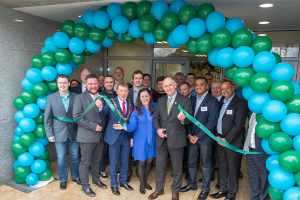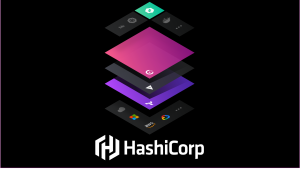Convergence 2011: HP and QLogic at the Eye of the Cloud Computing Storm
Virtualization and cloud computing are changing the velocity, agility and economics of the data center. However virtualization, combined with the explosion of data is placing unprecedented demands on I/O bandwidth and creating constraints for users. Despite conventional wisdom, converging storage, network and server infrastructure will not lead to IT budget cuts. Rather it will enable a new class of computing that would be unaffordable without converged technologies.
Whether you call it cloud, private cloud or hybrid cloud, converged infrastructure is becoming a fundamental underpinning of IT-as-a-Service. Without convergence, this new class of computing would not be possible because it would be too complex and too expensive.
Storage is the Anchor
According to HP Storage CTO Paul Perez, there are two major tectonic shifts going on in the industry today: 1) The explosion of data and 2) server virtualization. The fault line where these two plates meet is storage. Storage is becoming the linchpin of the cloud and new I/O demands will require converged technologies to succeed. Here’s a brief snippet of Perez’ premise:
Watch live video from SiliconANGLE.com on Justin.tv
At the highest level, companies like HP are converging storage, servers and networking to simplify shared storage and make infrastructure more agile and cost effective for the cloud. Underpinning convergence initiatives is a new trend around converged network adapters (CNAs), which allow Ethernet and storage traffic to run over the same technology. QLogic recently announced its 3rd generation of CNA devices which supports multiple technologies and protocols (e.g. Ethernet, TCP/IP, iSCSI, FCoE, etc) concurrently without the need to reconfigure the system. This means no downtime for the user and provides ultimate flexibility for customers. QLogic is the only vendor to provide this capability without user disruption and is rapidly becoming the dominant player in the CNA market with a nearly 50% market share.
The idea behind CNAs is it allows customers to replace multiple cards in a server with a single CNA device. For example, a mid-range server today might have two 1 Gig Ethernet cards and two FC cards for a total of four cards. A high end database server may have an additional two FC cards for more storage and two 10 Gig E cards for Web access for a total of eight cards. Using CNAs, the midrange server can consolidate four cards into dual CNAs and the eight-card high end server can consolidate down to four CNAs. This has a number of benefits for users, including:
- Cuts the number of connections in half
- Reduces the number of connectors and cables
- Lowers heat and power
- Simplifies the infrastructure
CNAs today are more expensive than host bus adapters but the simplified infrastructure means ultimately lower costs. The key point here is that with servers shrinking in size (e.g. 2Uà1U and smaller), traditional methods won’t be cost effective or even feasible at cloud scale.
According to industry analyst Josh Krischer:
The keyword for this new release is flexibility. With the total convergence of the 8200 Series, users can easily make use of a heterogeneous storage network and dynamically adapt to changing workload requirements. This can be useful in virtualized environments, where different VMs attach to disparate storage network technologies.
To Krischer’s point, the reality of storage networks is that multiple technologies and protocols will continue to coexist and infrastructure needs to be flexible and adapt to the changing needs of cloud computing and virtualized environments.
Here’s QLogic CTO Rob Davis talking about convergence from a technologist’s perspective:
Does Convergence Mean Less “Stuff?”
I was speaking with a crowd on Wall Street last week and one of the concerns in investment circles is that convergence will mean a smaller revenue opportunity for companies like HP, QLogic, EMC and other storage network players. While it’s nice to believe that converging infrastructure will save users tons of money, unfortunately this is a dangerous planning assumption for customers. Here’s the reality – in the next 72 months, the combined factors of Moore’s Law, multi-core technologies and virtualization will escalate I/O bandwidth requirements dramatically. According to Wikibon’s David Floyer, in this timeframe, I/O bandwidth will increase 100X, however historical Moore’s Law increases will only deliver a 16X increase to I/O performance. This leaves a gap of about 6X that is going to have to be filled.
Now that 6X gap won’t be delivered by simply throwing more ports and more CNAs at the problem. Rather server vendors will attempt to manage that gap with software and management techniques that attack the problem and reduce I/O. Conversations with server vendors such as IBM and HP suggest that through management techniques, they can address perhaps as much as 40-60% of the gap. However this still leaves about a 1.5X delta between what the market will require and what historical Moore’s Law rates will deliver.
Convergence Winners and Losers
HP and QLogic stand out to me. HP is an industry leader in servers, storage and networking. It is a clear #2 in networking with the acquisition of 3COM and in a solid position now at the high end to compete with Cisco. HP has always been a monster in servers and with its new PodWorks initiative it is innovating in new ways. Storage has always been a concern but with the addition of Dave Donatelli and key acquisitions including LeftHand Networks, Ibrix and now 3PAR leading the charge, the company is squarely positioned to dominate the converged infrastructure space.
QLogic is a core technology provider to the virtualized data center. It has a dominant position over Emulex in Fibre Channel and it is well-positioned, even against giants like Intel, in the Ethernet space. A key to QLogic’s success is the vision of its leader, H.K. Desai who clearly saw the future was to place IP in silicon as a time-to-market, functionality and cost imperative giving it a substantial functionality lead over the competition.
On the flip side, when it comes to convergence, IBM, Oracle, Emulex and Brocade are under increasing pressure for different reasons. IBM and Oracle lack the networking stack, although IBM recently bought Blade Networks and Oracle is riding the Infiniband wagon hard. Nonetheless, the convergence story at IBM is lacking and it’s unclear that the company has a coherent strategy in this space. That’s not to say one can’t be formed but it just doesn’t seem to be a priority. Oracle on the other hand has a convergence strategy – proprietary, locked-in, heavy doses of Oracle IP throughout the stack. Don’t get me wrong, Oracle isn’t going to cave soon – it just has a lot of customers and ‘partners’ rooting against it. Oracle is like the big telco extracting rents from customers.
Emulex is a comnpletely different story. It continues to run in dangerous territory with operating expenses at nearly 100% of revenue. Emulex was just named one of the top five companies in the communications equipment business ranked by the lowest operating margins— not a good honor. The company’s management is clearly betting that it will grow through share gain without incurring substantial incremental OPEX but it is up against some challenging competition in QLogic, Intel and Broadcom.
There’s a different angle on Brocade. It is the big SAN switching whale with high performance products that are complex and proprietary. With the acquisition of Foundry, the company has more goodwill on the balance sheet than it does annual revenue—not good. Cisco’s FCoE initiative is challenging Brocade’s high margin future and despite the Foundry acquisition its Ethernet strategy remains cloudy. It’s hard to see a good outcome for Brocade which has just never seemed to be able to recover from the dot.com implosion.
Here’s the bottom line for convergence suppliers in my view. The winners will be those companies that can:
- Deliver low cost in volume
- Control their IP destiny with robust stacks
- Stay open and accommodate multiple technologies in a flexible manner.
Oh…and they need to execute of course.
A message from John Furrier, co-founder of SiliconANGLE:
Your vote of support is important to us and it helps us keep the content FREE.
One click below supports our mission to provide free, deep, and relevant content.
Join our community on YouTube
Join the community that includes more than 15,000 #CubeAlumni experts, including Amazon.com CEO Andy Jassy, Dell Technologies founder and CEO Michael Dell, Intel CEO Pat Gelsinger, and many more luminaries and experts.
THANK YOU











